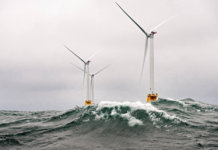The Massachusetts Department of Energy Resources (DOER) has filed a report with the state's Department of Public Utilities (DPU) outlining recommendations aimed at improving the process through which utility companies connect new renewable energy generation projects to the electric grid.
The recommendations were made in conjunction with the release of a report by the Gov. Deval Patrick administration that showed the sharp growth in renewable energy generation projects sparked a seven-fold increase in demand for interconnection service between 2004 and 2010.
The report recommends 10 changes to the existing interconnection process in order to accommodate the large increase in demand for distributed generation. Projects currently seeking interconnection to the grid must go through the existing interconnection process in order to connect non-utility-scale generation installations to the electric grid. The DOER emphasized many of the report's recommendations in its request to the DPU, as well as through some new suggestions.
The distributed generation sector in Massachusetts is relatively new and has grown sharply in recent years, according to the report. Typical distributed generation projects include small-scale or community-scale wind turbines, residential or commercial-scale solar photovoltaic installations, small-scale hydro and combined heat and power systems.
The DOER's filing with the DPU requested several changes to the interconnection process. First, the department recommended that the DPU mandate shorter, clearer and binding timelines for interconnection applications. These timelines would be significantly shorter than those in the existing tariff, and enforceable by the DPU.
Second, the DOER requested that the DPU create a uniform, user-friendly, online application system that would automatically and transparently track whether each utility meets established timelines, and allow applicants and state regulators to monitor the status of an application in real time. Third, the DOER recommended that the DPU assign an interconnection ombudsperson responsible for hearing and quickly resolving issues arising during the interconnection process.
The total volume of interconnection applications grew four-fold for National Grid, NStar and Western Massachusetts Electric Co. between 2004 and 2010, and the total kilowatt volume of interconnection applications reviewed grew seven-fold between 2004 and 2010. The findings of the report predict continued growth in interconnection demand as a result of the state's ambitious clean energy programs.
The recommendations also include developing guidance on state and federal requirements and expanding education on the interconnection process for installers, the DOER adds.



